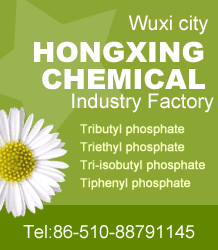Home > Offer to Sell > Catalyst and Auxiliary > Other Auxiliary Agent > Water Treatment Activated Carbon
Water Treatment Activated Carbon
Inquiry
| Post Date: | Sep 04,2018 |
| Expiry Date: | Sep 04,2019 |
| Detailed Description: |
Cas No. :7440-44-0;16291-96-6;90597-58-3;90452-98-5;83138-28-7;82600-5;64365-11-3;1333-85-3
Quantity: 100Metric Tons Specs:1.5, 2, 3, 4mm, 4-325mesh Price:1500 USD Metric Tons Payment Method: TT Water Treatment Activated Carbon Products are currently used for water treatment have activated carbon, silicon oxide, activated alumina, zeolite, diatomite and ion-exchange resins. The aluminum - silicone sorbents are hydrophilic adsorbent, they are selective adsorption to polar substances, so generally as the moisture absorption agent, dehydrant and nonpolar solution adsorbent. Activated carbon is a hydrophobic adsorbent, has strong adsorption to the organic compounds in aqueous solution, so generally as the city sewage and industrial wastewater treatment adsorbents. The raw materials of water treatment activated carbon have coconut shells, walnut shell, apricot, peach shell, wood, coal and so on, the coconut shell activated carbon is considered the best water treatment activated carbon. Water treatment activated carbon has powder, granule and columnar, among them granule is the most widely used. The smaller granularity, the faster absorption, but head loss increases, usually in 8-30 mesh is better. Yuanying water treatment activated carbon has three merits: large adsorption capacity, quick adsorption rate, good mechanical strength. In addition, activated carbon has large specific surface area, abundant pore structure, not easy off powder, low base layer resistance, chemical stability, high degree of purification, long service life, easy regeneration. The main influencing factors to water treatment process of activated carbon Due to the adsorption process and action principle of activated carbon water treatment involves more complex, so there are a lot of influence factors. The main factors include the properties of activated carbon, pollutants properties in water, solution PH, solution temperature, carbon treatment process principle, selective operating parameters and operating conditions. Activated carbon adsorption capacity is mainly related to its specific surface area, the greater specific surface area is, the better adsorption property is. Adsorption rate is mainly related to grain size and pores distribution of activated carbon. Water treatment activated carbon requires abundant transition hole (radius is 20 to 1000 angstroms), that is conducive to the adsorbate (pollutants in water) spreads to the hole. In addition, activated carbon surface chemical properties, polarity and electric charge also affect the adsorption effect. Application Activated carbon surface has a large number of functional groups such as hydroxyl and carboxyl, can undertake chemical adsorption and electrostatic attraction to various organic substances. Activated carbon can remove the organic substances such as humic acid, fulvie acid, lignosulfonic acid etc. which are harmful to anion exchange agent; also can remove the substances such as free chlorine residual which is harmful to cation exchanger. Generally, activated carbon can remove 63%-68% colloidal substances, around 50% ferrum, 47%-60% organic substances. Activated carbon has strong adsorption capacity to water dissolved organic contaminants, such as benzenes, phenols, petroleum and petroleum products. Organic pollutants by biological method and chemical method is difficult to remove, such as chrominance, foreign odor, methylene blue surface active substances, herbicides, pesticides, agricultural chemicals, synthetic detergents, synthetic dyes, amine compounds, and many synthetic organic compounds, activated carbon have good effect to removal them. Activated carbon has strong adsorption capacity to some heavy metal compounds, such as mercury, plumbum, ferrum, nickel, chromium, zinc, cobalt, etc., therefore, activated carbon has a good effect to electroplating wastewater and treatment smelting wastewater treatment. Activated carbon is widely used for domestic water and food industry, chemical industry, electric power industry, etc. for water purification, dechlorination, oil removal and deodorization. |
| CAS Registry Number: | 7440-44-0;16291-96-6;90597-58-3;90452-98-5;83138-28-7;82600-5;64365-11-3;1333-85-3 |
| Synonyms: | ;Whetlerite;Charcoal, except activated;HSDB 2017;Swine fly ash;Charcoal briquettes, shell, screenings, wood, etc.;NA1361;activated carbon;Graphite flake;activate carbon;coal based activated carbon;coal base activated carbon;Carbon;Activated carbon,coal;Medicinal Charcoal;active carbon;Charcoal actived; |
| Molecular Formula: | C |
| Molecular Weight: | 12.01 |
| Molecular Structure: | 
|
| Hazard Symbols: |  Xi:Irritant; Xi:Irritant; |
| Risk Codes: | R36/37/38:; |
| Safety Description: | S24/25‖S22:; |
| Company: | Yuanying Industry Limited [ China ] |
| Contact: | Earuler Wang |
| Tel: | +86-15179996644 |
| Fax: | +86-799-6859700 |
| Email: | shiyu666@gmail.com |
-
Disclaimer statement:The information and data included above have been realized by the enterprises and compiled by the staff, and are subject to change without notice to you. The Chemnet makes no warranties or representations whatsoever regarding the facticity, accuracy and validity of such information and data. In order to ensure your interest, we suggest you chose the products posted by our gold suppliers or VIP members.


